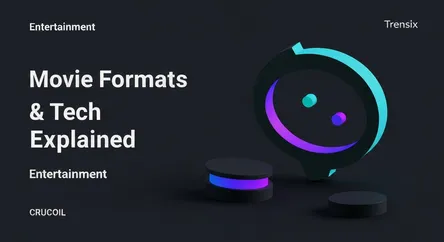Entertainment
Movie Formats & Tech Explained

Explore the tech that powers cinema. We break down formats like IMAX and Dolby, explaining how they create unforgettable movie-going experiences.
What is it?
Movie formats and technology refer to the specific technical standards used to shoot, project, and experience a film. This includes everything from the film stock or digital camera used, the aspect ratio (the shape of the image), and the resolution (like 2K or 4K). It also encompasses premium large formats (PLFs) such as IMAX, which uses a taller aspect ratio and massive screens for greater immersion, and Dolby Cinema, which pairs high-dynamic-range (HDR) projection with advanced Dolby Atmos sound. These technologies are designed to deliver a director's artistic vision with the highest possible fidelity, offering sharper images, richer colors, and more dynamic sound than a standard theater.
Why is it trending?
The conversation around film formats is surging as directors like Christopher Nolan champion specific technologies, most notably shooting with IMAX film cameras for movies like "Oppenheimer." This, combined with the desire for premium, event-worthy cinematic experiences, has driven audiences to seek out the best possible presentation. The competition between IMAX and Dolby Cinema also fuels public interest, as moviegoers debate which format offers the superior visual and auditory experience. The push for more immersive entertainment, both in theaters and at home, keeps these technological advancements at the forefront of film discussions.
How does it affect people?
Formats and technology directly shape the audience's viewing experience. Choosing to see a film in a premium format like IMAX or Dolby can transform it from a passive viewing into an immersive event, with visuals that fill your peripheral vision and sound that moves around you. This can make action sequences more thrilling and dramatic moments more impactful. It also influences consumer choice, affecting which theater someone attends and how much they're willing to pay for a ticket. For many, the format is now as important as the film itself, as it fundamentally alters how the story is seen, heard, and felt.